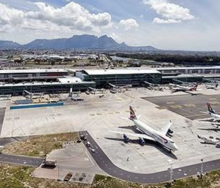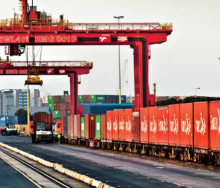The tragic accident on Fields Hill on September 5 which killed 22 people has led to a frantic search for solutions.
As a result, the Kwa Zulu Natal transport member of the executive council (MEC), Thembinkosi Willies Mchunu, has been meeting with various transport bodies in the province to try to find answers to the problem.
And the Durban Harbour Carriers Association (DHCA) has presented the MEC with their recommendations to promote road safety, and to avoid another Fields Hill type of accident.
A primary finding in this study is that a “prudent professional transporter” would always minimise risk and elect to travel the safer route on the toll road section of the N3 highway – avoiding the dangers of the steep and winding gradient on Fields Hill.
It is the other “non-professional” transporters that cause the problems, according to the DHCA, and the use of Fields Hill is more often than not an attempt by equally unprofessional drivers to avoid the toll, and pocket the bucks.
This alternative route – no shorter and considerably more dangerous than the N3 – also bears its own share of the blame.
Heavy commercial vehicles (HCVs) travelling up Fields Hill do not pose a danger to the community, according to the association. But HCVs travelling down the hill are at high risk. The reason, according to the truckers’ body, is “the fact that the road is only two lane, very steep and has no space to place an arrester bed in the event of brake failure or another such emergency.
“We believe that all heavy vehicles of over 16 000 kilogrammes gross vehicle mass (GVM) should be banned from travelling down Fields Hill.”
Looking at general road safety, the DHCA recommends that the state could assist in the matter by insisting that a legal requirement is in place in three, key foundation areas (See “Truckers call for stricter entry levels”, FTW October 18).
These are: Entry levels to own and operate a heavy vehicle; driver training on a continuous basis; and holding the owner of the goods being transported responsible for the transporter he appoints.
Regarding entry levels, the DHCA memo to the MEC said: “It is imperative that a road transporter knows and understands the legal and technical sides of the business. Once they understand those, they will soon realise that the road traffic laws are not there to mess a transporter around but are rather the accumulated wisdom of our mentors.”
A glaring fault about driver training, according to the association, is that, once a driver of a code 14 has passed his test, there is no legal obligation for any further training throughout his working life. The answer to that, they suggested to the MEC, is that a requirement for regular “Advance Training” and “Defensive Training” for professional drivers – more intensive in his earlier years then more spaced in later years – should be mandatory.
Also, a national register for all professional drivers – giving their complete driver history (accidents, fines, etc) – that is open to all prospective employers, should be mandatory.
Looking at the current lack of liability for the owner of goods, the DHCA had a metaphorical description for the MEC. “Every time we see a transport cowboy on the road,” they said, “with a vehicle held together by string and wire, someone is paying for him to be there. They have appointed him - normally based purely on price - with no sense of social responsibility other than their own bottom-line.”
Most transporters, the DHCA added, need two parties – financial institutions and insurance companies – in order to exist. And those that do not can be forced to lodge security deposits based on the risk to the public infrastructure.
“If these parties can then assess risk in real time on a continuous basis, they can then make a decision whether to continue to allow the “owner/operator” to have access to the vehicle and/or to underwrite the risk,” they told the MEC.
“Remember, the higher the risk, the higher the premiums (cost of doing business). So it is very much in the transporter’s interests to run legal and safe. It is market forces being harnessed to do what it does best – regulate and make the transporter professional - as the better he complies, the lower his direct costs.”
The DHCA also recommends that all the information gathered from this risk assessment should also be placed on a national register of owner/operators. “This being controlled by the insurance industry – the parties that pay the claims - and open to any prospective client (owner of goods) for a small fee.
“A prudent owner of goods will now have a place to assess the professionalism of the prospective transporter before his appointment.”
The DHCA also made another suggestion to the MEC. “Owners of goods must insure the goods for value and public liability,” they said, “with the transporter limited to a small pay-out in the event of an accident.”
It also highlighted that, in the UK, the insurance cover expected is legally linked to the transport rate offered, ie, twenty times total rate or a fixed sum, whichever is the lesser. “This,” the association added, “is to curtail abuse of power from a position of dominance, by the owner of the goods.
“Further, with parties owning hazardous goods – normally low value but having the potential to cause millions of rand in damages – these parties insist that the transporter carries at least R50-million rand cover.
“In the UK the owner must have the insurance cover – not the transporter - who will be limited by X times the transport rate or a fixed sum.”
In conclusion, the DHCA suggested that these three suggestions it had outlined would regulate entry into the industry; regulate the driver’s performance and history; whilst allowing market forces to regulate transport appointment based on best transport practices.
“We trust that these recommendations will assist you in plotting the way forward and add real meaning to road safety in SA,” they told the MEC.
Durban truckers suggest way forward to avoid road carnage
03 Nov 2013 - by Alan Peat
0 Comments
Border Beat
24 Jan 2025












